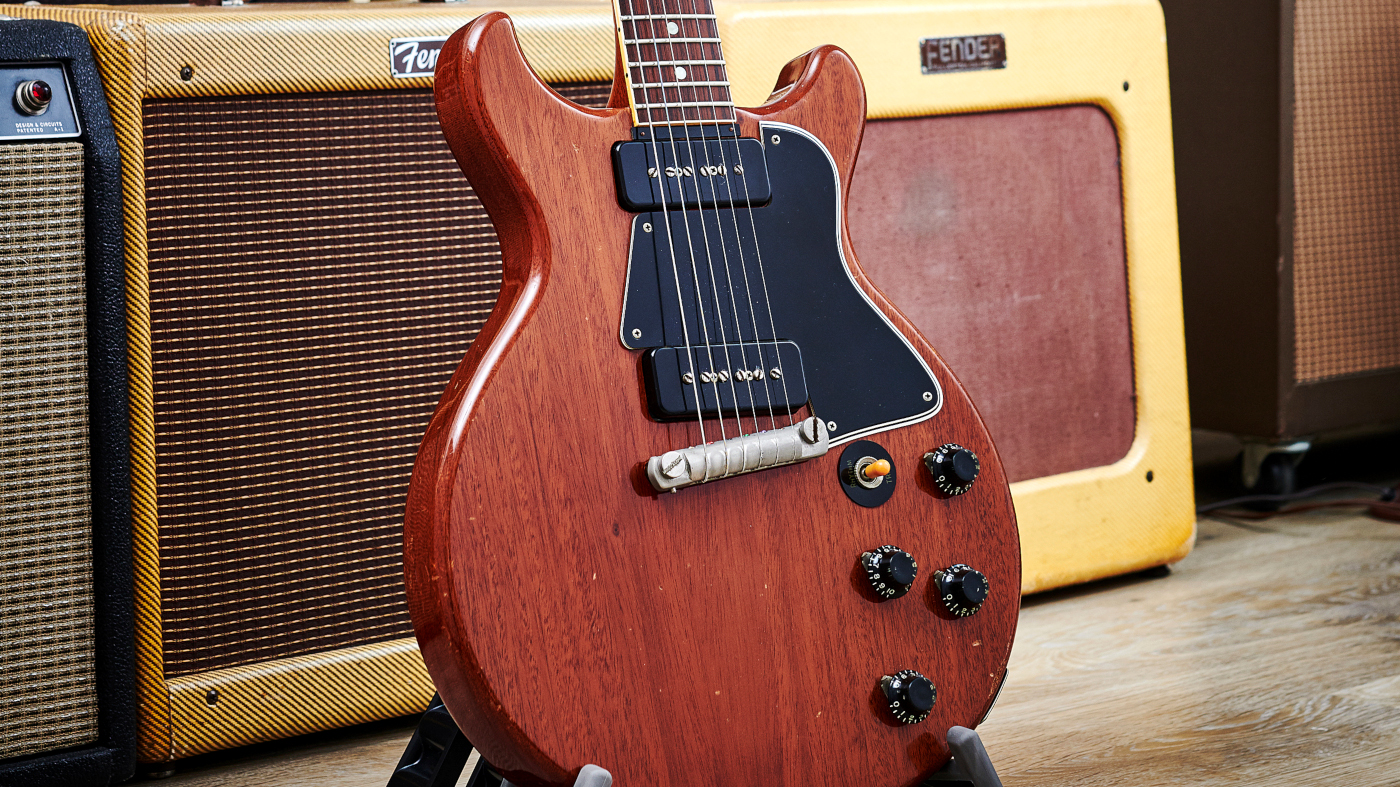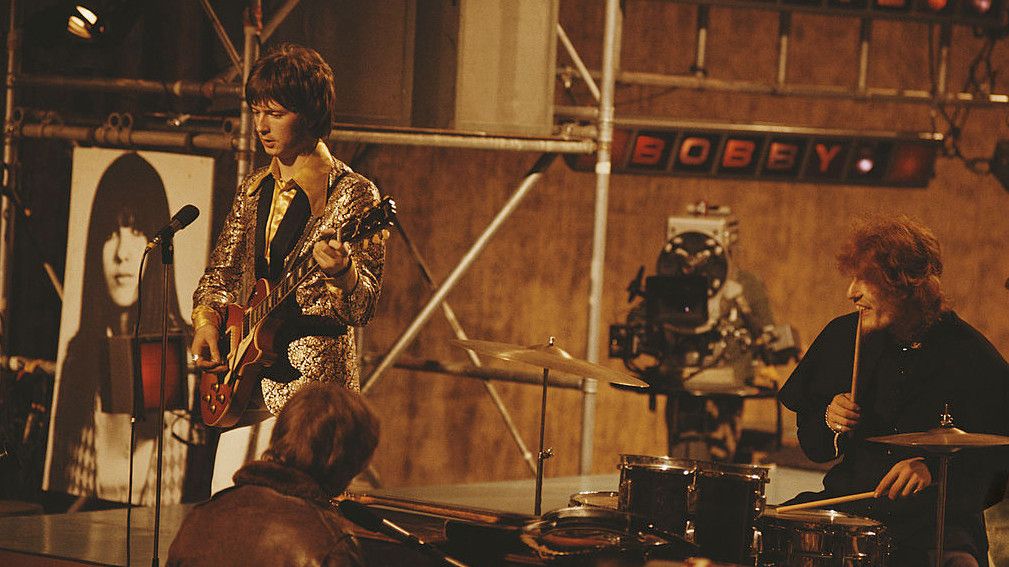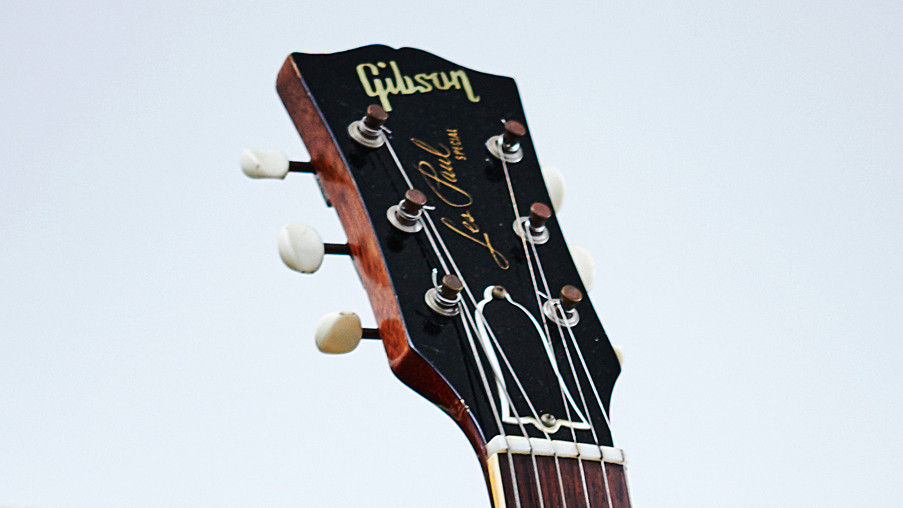Classic guitars: Gibson Les Paul Special profiled
The last in (and first out of) Gibson’s original Les Paul line-up...

The Les Paul Special was released in 1955 following the introduction of the Junior, TV and Custom models the previous year and completed Gibson’s seminal range of Les Paul-endorsed solidbody electric guitars that began with the Les Paul Model/Goldtop in 1952.

As a hybrid of the $235 dual-P-90 pickup Goldtop and the $120 no-frills ‘Limed Oak’ finish TV model, it was originally listed at $169 and sat between the two both in terms of price and spec.
“The new Les Paul Special solid body Electric Spanish [single] Cutaway Guitar incorporates the features that have made the Les Paul Model famous... Solid Honduras mahogany body and neck finished in limed mahogany shading,” reads Gibson’s 1955 catalogue.
With Les Paul’s influence on the wane, the guitar was rebranded the SG Special and Les’s name was soon removed from the headstock
Along with its Les Paul Model-style single-bound Brazilian rosewood fretboard and pearl inlay Gibson headstock logo, the Special inherited the Goldtop’s dual ‘soap bar’ P-90 pickup array (with black, rather than cream, coloured covers) including identical volume/tone controls and a three-way selector switch. However, with its unbound, flat-top mahogany slab body, dot inlays and ‘limed’ finish (a somewhat nebulous term ranging from pale beige to yellow throughout the 50s), it was equally reminiscent of the Les Paul TV, which, along with the Junior, was aimed at student-level players.
Furthermore, the Special’s modest appointments of three-on-a-plate Kluson Deluxe tuners and an adjustable, stud-mounted ‘wraparound’ bar bridge/ tailpiece maintained its comparatively humble appearance vis-à-vis the Goldtop, which, by 1955, had been upgraded with a Custom-style Tune-o-matic bridge.
The Les Paul Special sold relatively well during 1955, 1956 and 1957, with figures showing an increase from 373 to 1,345 to 1,452 units shipped respectively. But an overall downturn in the Les Paul range’s sales towards the end of 1957 prompted Gibson to take a fresh look at its designs. Subsequently, in July 1958, a new “ultra- modernistic” double-cutaway body shape was unveiled at the NAMM Show alongside similarly updated versions of the TV and Junior models, and by early 1959, the first of Gibson’s revised Les Paul Specials began to leave the factory.
While keen to modernise its image with the introduction of double-cutaway bodies, Gibson decided to replace the Les Paul Junior’s traditional Sunburst with a new transparent Cherry Red finish as standard. As its sales rocketed, in spring 1959, the company announced that the Special would also be available in the same colour in addition to “a brand-new shade” of limed mahogany. The wheels of change were in motion and later that November, with Les Paul’s influence on the wane, the guitar was rebranded the SG Special and Les’s name was soon removed from the headstock.
Want all the hottest music and gear news, reviews, deals, features and more, direct to your inbox? Sign up here.
Although the Special showed a 190 per cent increase in annual sales at the end of 1959, shipping figures began to decline yet again over the course of the following year, despite Gibson addressing the issue of the guitar’s notoriously weak neck/body join by shifting the rhythm/neck pickup routing further towards the centre of the body. In the face of relentless competition from the likes of Fender, Gibson decided to revise the Special’s design for a second time and in its Summer 1961 Gazette, the company finally announced: “Another guitar with new styling.” And with that, the SG Special’s transformation to the contemporary SG style of pointed double cutaways was complete.
1959 Gibson Les Paul Special

1. Headstock
Pearl inlaid Gibson logo and yellow silkscreen ‘Les Paul Special’ model name; black nitrocellulose face finish.
2. Hardware
Nickel-plated, angled, adjustable, stud-mounted ‘wraparound’ bar bridge/ tailpiece; three-on-a-plate Kluson Deluxe tuners; adjustable steel truss rod; two metal strap buttons.
3. Serial number
Five digits prefixed by the number 9 (denoting 1959 as year of manufacture) ink-stamped onto upper rear of headstock.
4. Neck
Single-piece Honduras mahogany; 22-fret, 12-inch radius, single-bound Brazilian rosewood ’board with pearl dot markers; 243⁄4-inch scale length; 111/16-inch nut width; joins body at 22nd fret; Cherry Red nitrocellulose finish.
5. Pickups & electronics
Two ‘soap bar’ P-90s; Four Centralab 500k pots (rhythm/treble pickup volume and tone); two ‘bumblebee’ tone capacitors; three-way Switchcraft selector switch; Switchcraft jack.
6. Body
Solid Honduras mahogany; flat top; double-cut, rounded horns; 171⁄4-inch length by 13 width by 13⁄4 depth; Cherry Red nitrocellulose finish.
7. Plastics
Two black ‘soap bar’ P-90 pickup covers; black rhythm pickup/’board spacer; four- layer (b/w/b/w) bevelled edge pickguard; four black ‘bell’ knobs (rhythm/treble pickup volume, tone); white plastic tuner buttons; three-ply (b/w/b) jack plate; two-layer (b/w) ‘bell’ truss rod cover; Catalin switch tip; black switch surround marked ‘Rhythm’ and ‘Treble’.
The Evolution of the Gibson Les Paul Special
- 1955 Year of release; single cutaway; pale ‘limed mahogany’ finish; switch on upper bass bout
- 1956 Tailpiece studs reinforced with threaded inserts; stronger yellow/ beige-tinted finishes common
- 1958 Opaquer, yellower ‘banana’ finishes common; Double cutaway (with rounded horns) prototype displayed at NAMM in July
- Early 1959 First double cutaway models shipped; plastic fretboard/pickup spacer; switch above ‘rhythm’ knobs
- Spring 1959 March-April Gibson Gazette announces “new cherry red finish”
- Late 1959 Switch adjacent to pickguard/bridge
- November 1959 Designated SG Special (‘Les Paul Special’ decal removed from headstock)
- Early 1960 Rhythm/neck pickup routing further towards centre of body
- 1961 Contemporary SG-style double-cutaway with pointed horns; Cherry Red or Opaque White finish
We would like to thank Mike Long at ATB Guitars in Cheltenham, UK.
Rod Brakes is a music journalist with an expertise in guitars. Having spent many years at the coalface as a guitar dealer and tech, Rod's more recent work as a writer covering artists, industry pros and gear includes contributions for leading publications and websites such as Guitarist, Total Guitar, Guitar World, Guitar Player and MusicRadar in addition to specialist music books, blogs and social media. He is also a lifelong musician.


